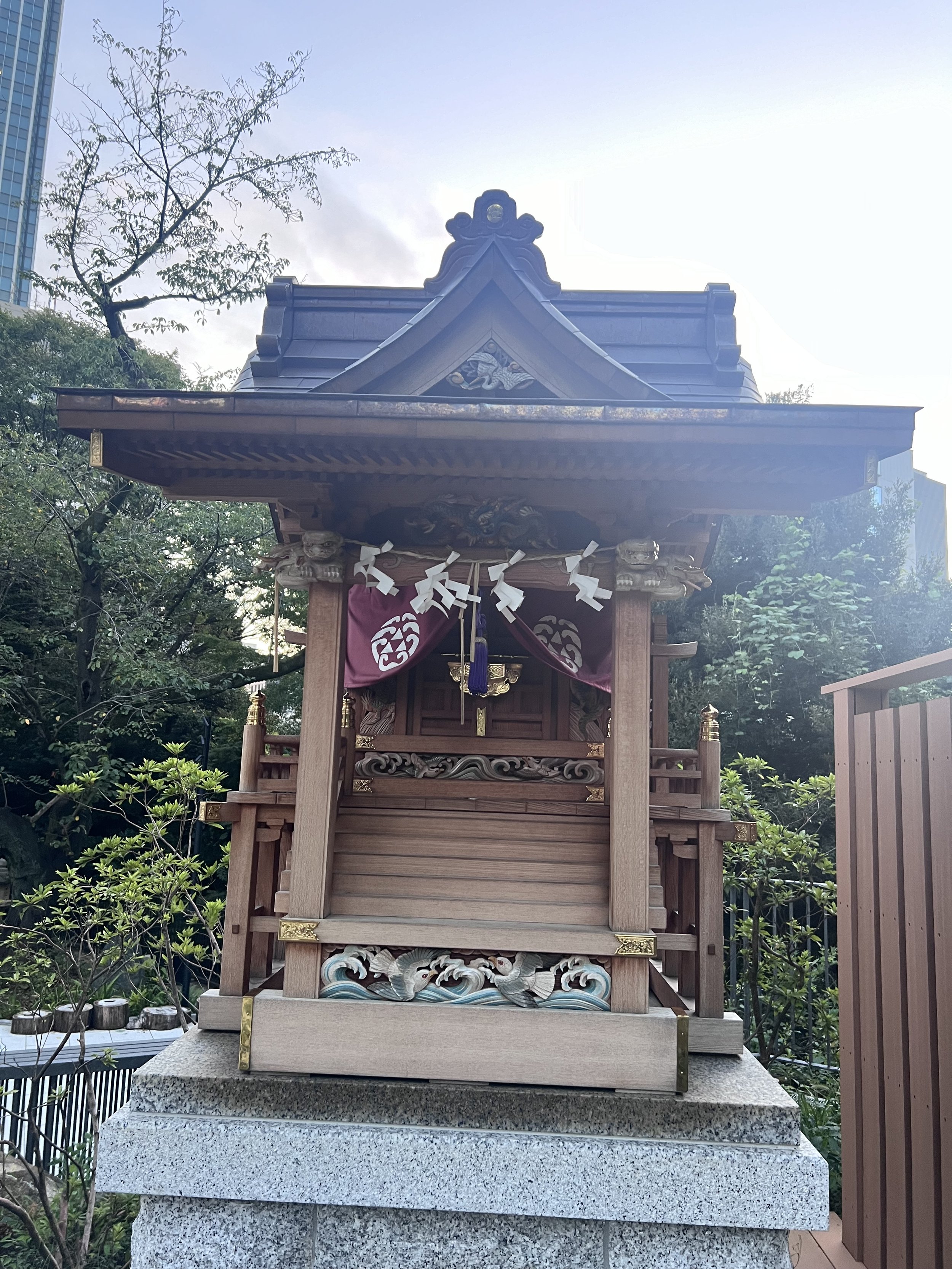Discovering Atago Jinja: Tokyo’s Hidden Shrine on the Hill
Tucked away in the heart of Tokyo, between many skyscrapers, lies Atago Jinja. Perched atop Atago Hill, the highest natural point in Tokyo’s central area, this shrine offers a peaceful retreat and quite the stair workout (please note this is NOT a place for exercise, but climbing the success steps is a workout).
**A Brief History**
Atago Jinja was established in 1603 by Tokugawa Ieyasu, the same shogun who played a pivotal role in Japan’s history by founding the Tokugawa shogunate. The shrine was dedicated to the deity of fire protection, Homusubi no Mikoto, to safeguard the city of Edo (modern-day Tokyo) from the ever-present threat of fires, a significant concern in the densely packed wooden city.
Atago Hill itself is steeped in legend. It’s said that the steep stone stairway leading up to the shrine, known as "Shusse no Ishidan" or the "Stairway of Success," was the site of a famous feat. In 1634, a samurai named Magaki Heikuro reportedly rode his horse up the treacherous steps to present plum blossoms to the shogun, earning great honor and recognition. Today, these steps are still a symbol of success and ambition, attracting visitors who seek to test their mettle or seek good fortune in their endeavors.
**Interesting Features of Atago Jinja**
One of the most striking features of Atago Jinja is the stark contrast between the shrine’s serene, natural setting and the surrounding urban environment. From the top of Atago Hill, you can enjoy a rare view of Tokyo that juxtaposes the traditional and the modern, with lush greenery framing the cityscape below.
The main hall of the shrine, reconstructed in the post-war period, is a modest yet beautifully preserved example of Shinto architecture. The shrine is particularly popular among those in the fire and security professions, who come to pay their respects and pray for protection.
Another intriguing aspect of Atago Jinja is its connection to the "Shusse Inari" sub-shrine, dedicated to Inari, the god of prosperity, fertility, and rice. The fox statues guarding this sub-shrine are believed to bring success in business and personal endeavors, drawing many visitors who seek these blessings.
Atago Jinja also hosts several traditional festivals throughout the year, including the annual Atago Matsuri in September, which sees the shrine grounds come alive with vibrant processions, music, and food stalls. These events offer a fantastic opportunity to experience local culture and participate in time-honored rituals.



